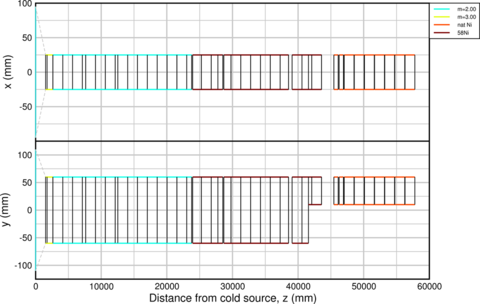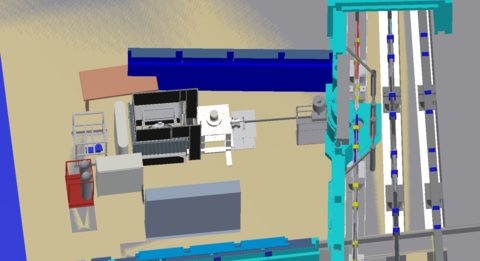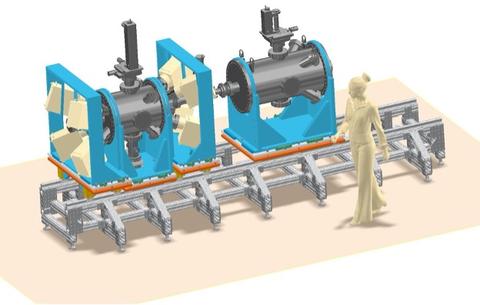The new NG-7
NG-7 currently provides neutrons to a 30 m SANS instrument, a test station (PHADES) with a monochromatic beam (\(\lambda\) = 4.1 Å), two neutron interferometers, and a horizontal sample reflectometer. The guide is straight (Be and Bi filters remove unwanted radiation before the SANS machine). The new guide will also be straight and the same size (50 mm by 120 mm) as the current NG-7. However, it will be coated with m = 2 supermirror rather than 58Ni. This change will provide a significant gain for the instruments on NG-7.

The NCNR will retire the horizontal sample reflectometer which is approaching 30 years old and relocate the \(\alpha\)-\(\gamma\) instrument from NG-6 to NG-7. This move makes way for the upgrade of the cold neutron imaging station on NG-6. Even though the old horizontal reflectometer will be removed, the NCNR will still be able to perform reflectometry experiments on horizontal surfaces using MAGIk. In fact, MAGIk works better than the reflectometer on NG-7 because: 1) the data rate is better and 2) the sample is stationary throughout the experiment (we utilize the rather large height of NG-D to move the beam).

Moving the \(\alpha\)-\(\gamma\) instrument to NG-7 will increase the data rate nearly 3x and provide more physical space, thus significantly improving operational flexibility. The device relies on a totally absorbing neutron detector and has been used to measure the absolute neutron fluence of a cold, monoenergetic neutron beam to a precision that is five times better than the previous state of the art. In conjunction with a weakly absorbing neutron detector known as the flux monitor, it is used to measure the neutron fluence in a beam-based measurement of the neutron lifetime, in precise measurements of key neutron absorption cross sections (notably in Li, B, and 235U(n,f)), and as part of an effort to recalibrate the US national radioactive neutron source NBS-1.
Alpha-Gamma 2.0
Building on the success with this program and considering the continuing need for neutron metrology with even smaller uncertainties, a design for a new pair of instruments is underway (version 2.0). The new devices are depicted in the figure below. They are considerably larger than the current instrument in order to accommodate a larger neutron beam. In addition, they feature a larger number of gamma-ray and solid-state detectors in order to increase solid angle while simultaneously reducing certain geometry-based systematic errors. Finally, several features are incorporated to simplify and render safer the routine operation of these delicate devices. This is important for our eventual goal of operating these devices as a service for interested outside users.


